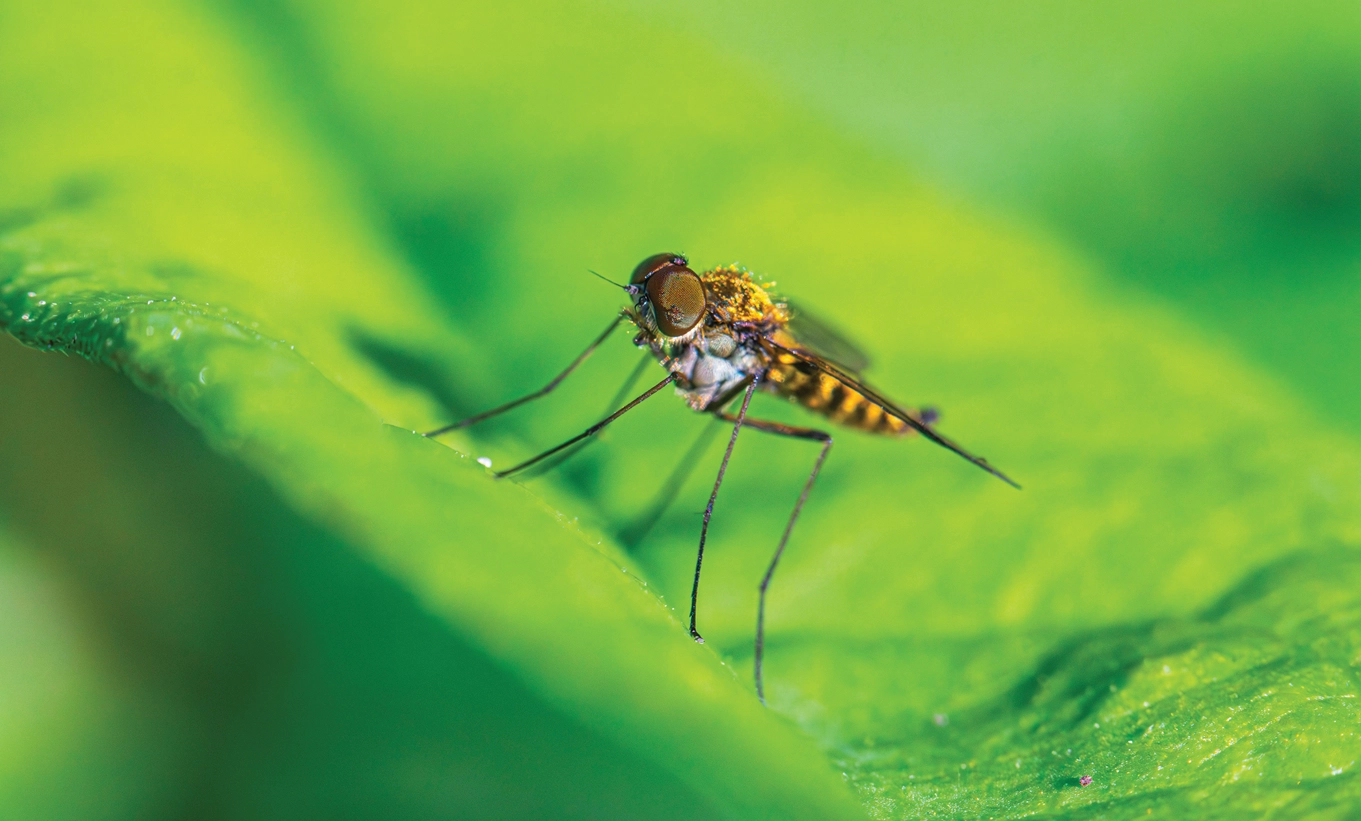Home

My All-Out War Against Mosquitoes
Some evenings, I feel like I’m hosting a buffet for the local mosquito population. Just when the air cools and the garden beckons, out come those tiny, persistent vampires. Over the years, I’ve learned that surrendering your garden is not an option. These pests aren’t just annoying; they’re disease carriers and keeping them at bay is essential garden care. Here’s how I fight back organically and effectively.
Meeting the Insect Enemy
Every mosquito, from egg to adult, needs standing water. A tiny puddle, a forgotten bucket or curled leaf can become a nursery for hundreds of biters. Though they’re often thought of as a summertime problem, mosquitoes are here year-round. Adults mostly die, but larvae and eggs survive in wet soil, under leaves and in the muck at the bottom of barrels and buckets. Once temperatures rise or spring rains hit, they hatch and seem to spread overnight.
The best way to control mosquitoes is to stop them before they even get a chance to take flight. That means no standing water — seriously. Even that forgotten plastic cup under the hydrangea can be home for up to 1,000 mosquitos.
Here’s my personal checklist for eliminating breeding grounds:
The Big Dump: Every bucket, every birdbath (should be emptied and refilled daily!), every pet water dish – if it holds water, dump it. I’ve found mosquitoes breeding in the cat’s water and in an unused upstairs toilet while we were away. You’d be surprised where they can find a comfortable puddle.
Clear the Garden Clutter: Old ceramic pots, neglected tin cans, forgotten outdoor toys – they are all mosquito motels. Get rid of them. Don’t forget containers hidden by overgrown plants. Pay special attention to discarded tires, which are notorious for collecting water and becoming prime breeding spots.
Gutter Check: Clogged roof gutters are prime real estate for mosquitoes. Clean them annually, especially if you have lots of leaves. A blocked gutter can trap water and produce millions of mosquitoes.
Manage Water Features: Flip over plastic wading pools and wheelbarrows when not in use. For ornamental ponds, consider aeration or stocking them with cheap goldfish, which gobble larvae. Herons rarely appear in urban areas but have been known to steal koi, so stick to inexpensive goldfish. Keep unused pools clean and chlorinated; even water on a pool cover can become a breeding ground.
Consider Permeable Surfaces: If you are designing or re-designing areas, think about permeable pavers or gravel paths instead of solid concrete. These allow water to drain into the ground rather than pooling on the surface.
Sometimes you can’t drain every water source, like rain barrels or low-lying areas. This is where we bring in the cavalry – the organic and DIY solutions that target larvae without harming your beloved garden ecosystem.
Mosquito Dunks and Sprinkles: These can be found at most garden centers and are your best friends for standing water that you can’t dump. They contain Bacillus thuringiensis israelensis (Bti) or Bacillus sphaericus — naturally occurring bacteria that produce a protein toxic only to mosquitoes and black fly larvae. The larvae eat it, can’t digest it and starve to death. They’re simple, effective and safe for pets, birds, beneficial insects — even goldfish! A Bti “donut” can provide up to 30 days of control. Toss them into rain barrels, ornamental ponds without fish, or any persistent standing water. I prefer the “sprinkle” form for smaller containers and use it weekly to be safe.
Oil Barriers (Use with Extreme Caution!): A thin layer of light vegetable oil (about 1/3 cup with dish soap per each 55-gallon drum) can suffocate larvae by preventing them from reaching the surface for air. Microbes in the water break down the oil within 24 hours, usually without harming aquatic animals. Use this only in water not used for irrigation, as it can leave a residue.
Strategic Planting: No plant creates a mosquito-free zone, but some offer mild repellent effects when their leaves are brushed or crushed. Consider citronella grass, lemon balm, catnip, rosemary, basil or marigolds near seating areas or pathways. This is more of a deterrent than a killer, but every bit helps.
Good Garden Hygiene: Beyond water, a tidy garden can help. Trim dense shrubs and tall grasses, as these can provide cool, damp resting spots for adult mosquitoes during the day. Improving air circulation can make your garden less appealing.
Even with all our best efforts, a few adult mosquitoes will inevitably break through the lines. When you’re outside, especially at dawn or dusk when they are most active, keep these tips in mind:
Dress for Defense: Long-sleeved shirts and full-length trousers are your best friends. Two layers of clothing make it harder for them to pierce your skin. I’ve also noticed that wearing light-colored clothes seems to reduce my attractiveness to them.
Netting: If you’re serious about your garden time, especially when pruning or harvesting in a particularly buggy area, a mosquito net that fits over your hat or cap is a surprisingly effective investment.
Repellents (Organic Options): While DEET is widely known and effective, if you prefer not to use it, lotions containing oil of eucalyptus or citronella can offer mild insect repellent properties. Always remember to wash treated skin and clothing when you come back inside.
Fan Power: A simple oscillating fan on your porch or patio can be surprisingly effective. Mosquitoes are weak flyers, and a good breeze can keep them from landing on you.
By diligently eliminating standing water, employing these organic and DIY strategies and taking smart personal precautions, you can significantly reduce the mosquito population in your home garden. A little effort goes a long way toward turning that annoying buzz into the sweet silence of a thriving, bite-free oasis.
